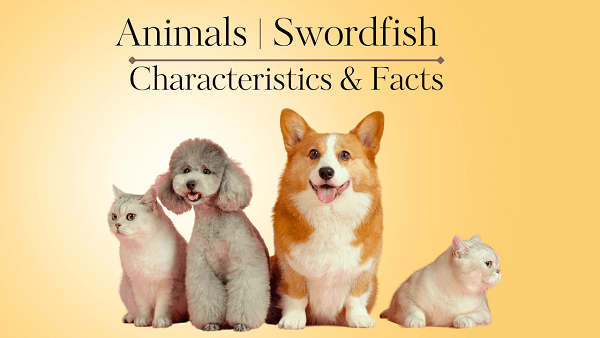
Swordfish Definition | Characteristics & Facts
General Characteristics & Facts
Appearance
Swordfish have a distinctive appearance with a long, flat bill, or rostrum, which can make up about one-third of their total body length. The bill is used for slashing at prey. They have a streamlined body and a crescent-shaped tail fin, which allows them to swim rapidly through the water.
Size
Swordfish are large fish. They can reach lengths of up to 14 feet (4.3 meters) and weigh as much as 1,400 pounds (650 kilograms). The average size, however, is usually around 6 to 11 feet (1.8 to 3.4 meters) in length.
Distribution
Swordfish are found in the Atlantic, Indian, and Pacific Oceans, typically in warmer waters. They are highly migratory and can cover long distances in search of food and suitable breeding grounds.
Feeding Habits
Swordfish are apex predators and feed on a variety of prey, including squid, small fish, and crustaceans. They are known for their remarkable speed and agility, often using their bill to slash and stun their prey before consuming it.
Adaptations
Swordfish have several adaptations that contribute to their hunting and survival. In addition to their bill, they have a muscular body, a large and powerful tail fin, and a heat exchange system in their eyes that allows them to maintain elevated temperatures in their brain and eyes, enhancing their visual acuity in colder waters.
Behavior
Swordfish are solitary creatures and typically swim alone, except during mating season. They are known for their impressive swimming speed, capable of reaching speeds up to 50 miles per hour (80 kilometers per hour).
Reproduction
Swordfish are oviparous, which means they lay eggs. They reproduce through external fertilization, with females releasing their eggs into the water, and males releasing sperm to fertilize them.
Commercial Importance
Swordfish are highly valued for their meat, which is firm and flavorful. They are targeted by commercial and recreational fishermen worldwide.
Read our Animals Encyclopedia with Complete Facts
Physical Characteristics
Body Shape: Swordfish have a streamlined and elongated body shape, which helps them swim efficiently through the water. Their body is cylindrical and tapers towards the tail.
Size: The average size of an adult swordfish is around 6 to 11 feet (1.8 to 3.4 meters) in length. Although they can reach lengths of up to 14 feet (4.3 meters).
Weight: Swordfish are heavy fish, with adult individuals weighing anywhere from a few hundred pounds to over 1,000 pounds (450 to 500 kilograms). The maximum reported weight for a swordfish is around 1,400 pounds (650 kilograms).
Bill: The most distinctive feature of swordfish is their long, flat bill, or rostrum, which is longer in females compared to males. The bill can make up about one-third of their total body length. It is sharp and resembles a sword, hence the name swordfish.
Coloration: They have a unique coloration. The upper part of their body is a dark bluish-black or brownish-black color, which helps them blend into the darker depths of the ocean. The lower part of their body is lighter, often a silver-white color.
Fins and Tail: Swordfish have a large dorsal fin, which runs along their back, and pectoral fins located on either side of their body. These fins help them maneuver and maintain stability while swimming.
Scales: Swordfish have large, smooth scales that are known as dermal denticles. These scales reduce drag in the water and help protect the fish from abrasions and parasites.
Eyes: Swordfish have well-developed eyes positioned on the sides of their head. Their eyes are large and provide excellent vision, allowing them to spot prey and navigate through their environment.
Continue To Explore All Animals That Start With S
Scientific Classification of Swordfish
Kingdom: Animalia (Animals)
Phylum: Chordata (Chordates)
Class: Actinopterygii (Ray-finned fishes)
Order: Perciformes (Perch-like fishes)
Family: Xiphiidae (Swordfishes)
Key Locations
- Atlantic Ocean
- Mediterranean Sea
- Indian Ocean
- Pacific Ocean
- Gulf of Mexico
- Caribbean Sea
View All A-Z Animals List
Swordfish FAQs
What does Swordfish Eat?
- Fish
- Squid and Octopus
- Crustaceans
Swordfish are recognizable animals
They have long-pointed bills that they use for slashing and hunting prey.
What do Swordfish eat?
Swordfish primarily eat squid, as well as various types of fish found in their habitat.
Explore More:
- Tarantula
- Mackerel
- Mackerel
- Sea Stars
- Bird
- Amphibians
- Vertebrates
- Sand Dollars
- Barnacles
- Scallop
- Brittle stars
- Tilapia
- Carp
- Krill
- Catfish
- Grouper
- Calm
- Yak
- Yucatan Brown Brocket
- White-tailed Deer
- Uakari
- Utahraptor (Dinosaur)
- Qinghai Lake Naked Carp
- Qilian Shrew
- Qinling Panda
- Qacha’s Nek long-fingered Frog
- Red Fox
- Red Panda
- Rockhopper Penguin
- Salamander
- Snail
- Storks
- Jacana
- Junglefowl
- Jabiru Stork
- Junco
- Japanese Crane
- Kudu
- Kingfisher
- Giant Stuffed Tiger
- Giant Stuffed Dolphin
- Giant Stuffed Bear
- Giant Stuffed Penguin
- Scrat (Ice Age)
- Freshwater Clams
- Water snakes
- Sphynx at
- Honeybees
- Parrots
- Caribou (also known as reindeer)
- Nemo (from Finding Nemo)
- Simba (from The Lion King)
- Pink Panther
- Garfield
- Blobfish
- Japanese giant salamander
- Vampire Bat
- Shark
- Crab
- Fennec Fox
- Gila Monster
- Sea Turtle



